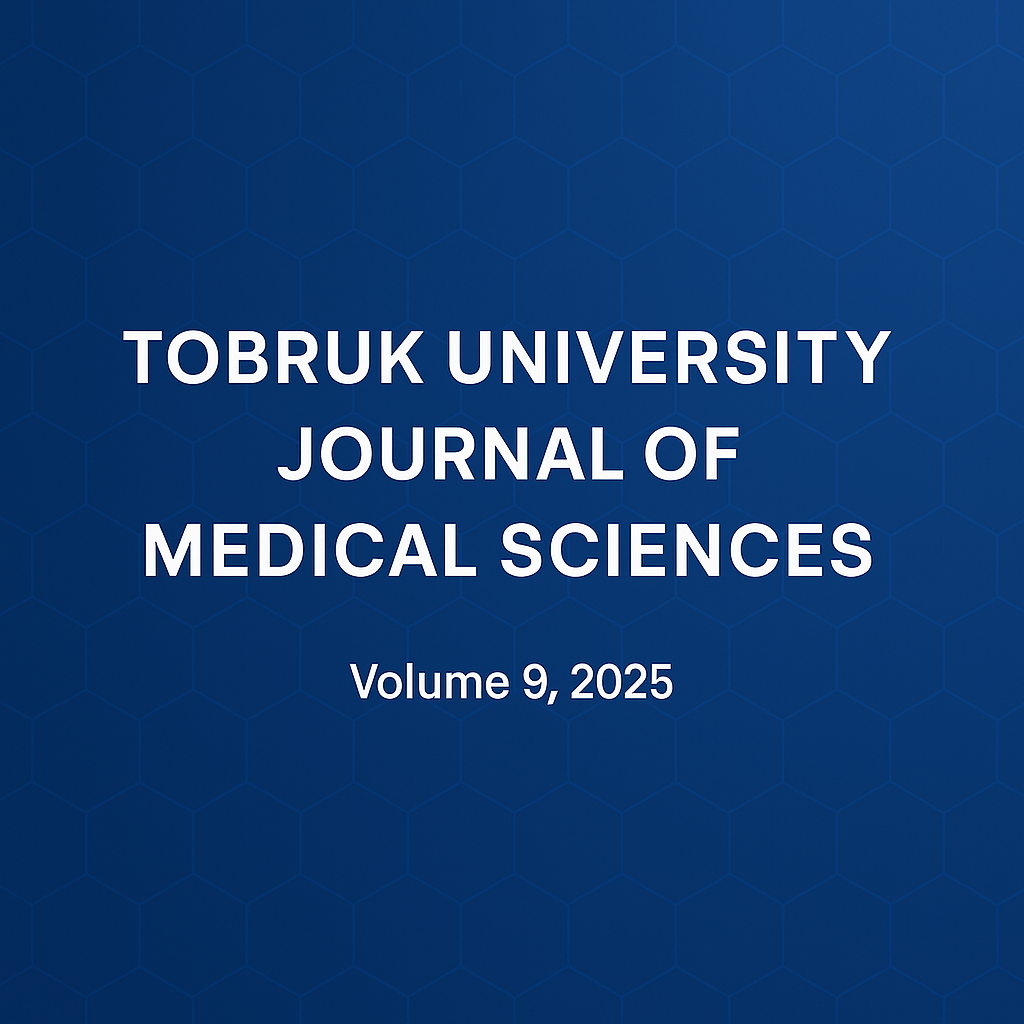Management of Chronic Subdural Hematoma; Middle Meningeal Artery Embolization versus Surgical Evacuation: A Comparative Study
DOI:
https://doi.org/10.64516/bse6sn42Keywords:
Chronic Subdural Hematoma, Middle Meningeal Artery Embolization, Surgical EvacuationAbstract
Background: Chronic subdural hematoma (CSDH) is a prevalent neurosurgical pathology greatly impacting elderly cases and is correlated to significant morbidity and death
Aim: This study aimed to compare the clinical and radiological results between surgical evacuation and middle meningeal artery embolization in the management of chronic subdural hematoma.
Material and Methods: This was a prospective, non-randomized case series clinical trial study that was conducted on symptomatic chronic subdural patients who were admitted to Cairo University Hospitals starting from October 2022 to October 2023.
Results: All patients experienced postoperative headache relief, with immediate improvement in Group A and delayed improvement from the second month in Group B. Motor power also improved immediately in Group A, while Group B showed improvement starting from the second month. According to the Markwalder grading system, Group A showed non-significant improvement (p = 0.082), with most patients initially at grade 1, while all Group B patients were grade 1 on admission. The average postoperative hospital stay was significantly shorter in Group B (2.5 ± 1.0 days) in comparison with Group A (5.20 ± 4.31 days), reducing infection risk; this variance was highly statistically significant (p < 0.001).
Conclusion: Surgical evacuation offers immediate symptom relief and reduced hematoma thickness, while long-term clinical and radiological outcomes are comparable to surgery and MMA embolization. MMA embolization is less invasive, lower-risk, and quicker, but requires close monitoring and is effective in carefully selected non-acute cases.
References
1. Foreman P, Goren O, Griessenauer CJ, Dalal SS, Weiner G, Schirmer CM. Middle meningeal artery embolization for chronic subdural hematomas: cautious optimism for a challenging pathology. World Neurosurg. 2019; 126:528–9.
2. Edlmann E, Giorgi-Coll S, Whitfield PC, Carpenter KLH, Hutchinson PJ. Pathophysiology of chronic subdural haematoma: inflammation, angiogenesis and implications for pharmacotherapy. J Neuroinflammation. 2017; 14:108.
3. Takizawa K, Sorimachi T, Ishizaka H, Osada T, Srivatanakul K, Momose H, et al. Enlargement of the middle meningeal artery on MR angiography in chronic subdural hematoma. J Neurosurg. 2016; 124:1679–83.
4. Lee RP, Chaichana KL, Huang J, Tamargo RJ, Caplan JM. Neurosurgical emergencies. Neurointensive Care Unit: Clinical Practice and Organization. 2020:195-230.
5. Nouri A, Gondar R, Schaller K, Meling T. Chronic Subdural Hematoma (cSDH): A review of the current state of the art. Brain and Spine. 2021 Jan 1;1:100300.
6. Mehta V, Harward SC, Sankey EW, Nayar G, Codd PJ. Evidence based diagnosis and management of chronic subdural hematoma: a review of the literature. Journal of clinical neuroscience. 2018 Apr 1;50:7-15.
7. Alam S, Rahman MM, Sarker MH, Ahmed N, Chowdhury FH. Head injury. Principles of Neurosurgery: A Concise Text. 2024 Dec 30:133.
8. Ban SP, Hwang G, Byoun HS, Kim T, Lee SU, Bang JS, et al. Middle meningeal artery embolization for chronic subdural hematoma. Radiology. 2018; 286:992–9.
9. Sila D, Casnati FL, Vojtková M, Kirsch P, Rath S, Charvát F. Middle Meningeal Artery Embolization versus Surgery in Patients with Chronic Subdural Hematoma—No More Fence Sitting?. Neurology International. 2023 Dec 6;15(4):1480-8.
10. Kan P, Maragkos GA, Srivatsan A, Srinivasan V, Johnson J, Burkhardt JK, Robinson TM, Salem MM, Chen S, Riina HA, Tanweer O. Middle meningeal artery embolization for chronic subdural hematoma: a multi-center experience of 154 consecutive embolizations. Neurosurgery. 2021 Feb 1;88(2):268-77.
11. Sattari SA, Yang W, Shahbandi A, Feghali J. Middle meningeal artery embolization versus conventional management for patients with chronic subdural hematoma: a systematic review and meta-analysis. Neurosurgery. 2023 Jun 1;92(6):1142-54
12. Ironside N, Nguyen C, Do Q, Ugiliweneza B, Chen CJ, Sieg EP, James RF, Ding D. Middle meningeal artery embolization for chronic subdural hematoma: a systematic review and meta-analysis. Journal of neurointerventional surgery. 2021 Oct 1;13(10):951-7.
Downloads
Published
Issue
Section
License
Copyright (c) 2025 Mohamed Shehab Saad Zaghloul (Author)

This work is licensed under a Creative Commons Attribution 4.0 International License.











